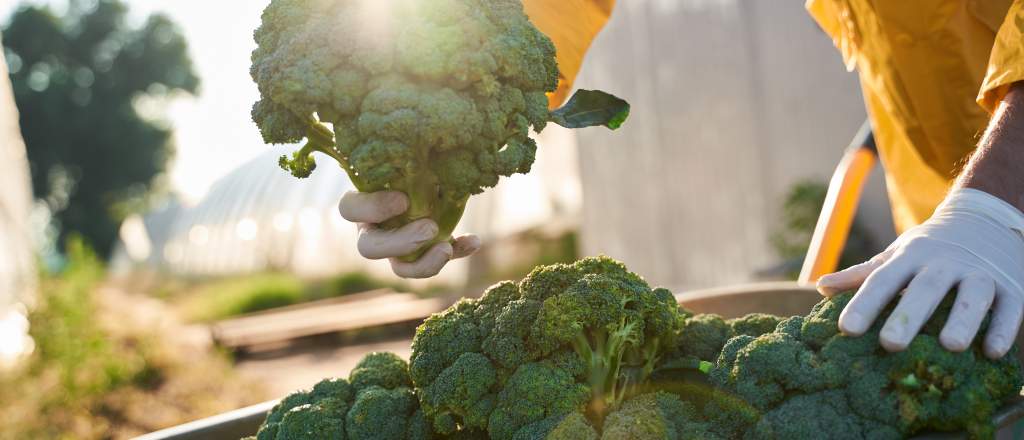Broccoli may enhance digestion, reduce cholesterol levels, and maximize the absorption of vitamins and minerals, among other health advantages. Additionally, it may improve eye health and vision, strengthen the immune system, protect the skin, prevent birth deformities, control blood pressure, and avoid allergic reactions. Why not get all these benefits most deliciously?
Key Blog Post Points:
- Roasting Broccoli
- Air Frying Broccoli
- Blanching Broccoli
- Sautéeing Broccoli
- Steaming Broccoli
- Microwaving Broccoli
- Boiling Broccoli
One of the best healthful vegetables is bright green broccoli! A lot of home cooks could be tempted to overcook it and turn it into a mushy mess. But if you prepare it properly, it may be transcendent! As an illustration, the roasted broccoli that is seen above, when cooked to blackened perfection in a hot oven, is just as enticing as a crispy French fry. Here are the 7 ways you can cook broccoli. But before that, let's jump to things you should keep in mind when going to cook broccoli.
-
Purchasing Broccoli
Choose broccoli that has crisp, dark green, or purple-green buds that are securely closed, firm stems, and crisp leaves. Bunches with woody stems, open buds, or yellowing are no longer fresh.
The Variety
Broccoli comes in several variations. However, the green calabrese broccoli, renowned for its big green florets and substantial stalks, is the most popular in the United States. However, you can frequently find additional varieties at vegetable stands and farmer's markets, such as purple and white sprouting broccoli. This variety has more heads and stems that are thinner. However, it prepares and tastes exactly like the conventional kind.
-
Prefer Organic
When possible, it is better to choose locally produced food produced with organic farming practices. You can use conventionally farmed broccoli if you can't find any locally or organically grown. It is included in the Clean 15 list of vegetables cultivated with the fewest pesticides. Before using it, make careful to thoroughly wash it.
-
Preparation of Broccoli:
To get rid of any bugs, soak broccoli in salted water or vinegar for ten minutes. Before eating or cooking, remove the tough leaves and thoroughly rinse the florets in cold water. Also, trim the stalks' butt ends before peeling and cooking them if you intend to cook them.
-
Preparation of Broccoli before cooking:
Compared to the stalks, the flower heads cook more quickly. Slice the stalks evenly lengthwise into half or quarters, stopping just short of the flower head, or detach the flower heads from the stalks to cook separately. The heads can be prepared either whole or, if they are too big, divided into florets for more even cooking.
Here are seven ways to cook broccoli.
Method #1: Roasting
Nothing could be simpler than roasting broccoli to perfection! Just do the following and you’ll get the perfect roasted broccoli.
Then, line a rimmed baking sheet with baking parchment and preheat the oven to 400 degrees. Cut a broccoli head into uniformly sized florets as the oven heats up. They should be arranged in a single layer on the baking sheet. Sprinkle salt and pepper over the broccoli florets before tossing them with olive oil. They should bake for 15 to 22 minutes, or until the florets are golden and crisp around the edges, in a hot oven.
I'm done now! Meyer lemon halves can be roasted alongside broccoli. Drizzle the roasted lemon juice over all the florets as soon as they come out of the oven. Finish them off by generously sprinkling them with red pepper flakes. Enjoy a warm serving!
Method #2: Air Frying Broccoli
This air fryer broccoli dish was made for you if you enjoy roasted vegetables. It has the same flavor as traditional roasted broccoli but requires much less work. You might never return to oven-roasted broccoli after attempting this recipe for air-fried broccoli.
Ingredients:
Fresh broccoli florets, torn or chopped into extremely small, evenly spaced pieces., Olive oil extra virgin, 2 tablespoons, 14 teaspoon garlic powder, 14 teaspoon onion powder, 18 tsp. of kosher salt, freshly ground black pepper, 1/8 tsp. optional accouterments Freshly grated parmesan cheese and lemon wedges
Toss everything together in a bowl to evenly distribute the seasonings throughout the broccoli florets. To equally distribute the seasonings among the broccoli florets, combine everything in a basin. Fill the air fryer basket evenly with the broccoli mixture. six minutes at 400 degrees. As soon as the timer goes off, remove the basket and serve. (Optional) Top with a little freshly grated parmesan cheese or lemon juice.)
Method #3: Blanching Broccoli
Broccoli should be blanched if you're making a vegetable platter, a chilled broccoli salad, or frittatas.
A large bowl should be filled with ice and cold water before you quickly boil 4 quarts of water with 2 teaspoons of salt. Broccoli florets should be lowered into boiling water and cooked for two to three minutes. Bright green and delicate broccoli are ideal. Remove the broccoli and drop it into the freezing water right away. Drain the broccoli thoroughly once it has cooled.
Method #4: Sautéeing Broccoli
It's surprisingly easy to sauté broccoli if you've never done it before. The entire process takes less than ten minutes!
To begin, sauté. Although it may sound absurd, this technique for cooking broccoli in the pan calls for both sautéing and steaming. Start by putting a generous amount of olive oil over medium heat in a big skillet. Add the broccoli florets, thin slices of garlic, and salt & pepper to taste. 3 to 4 minutes of cooking.
Next, steam. This step aids in the complete cooking and softening of sautéed broccoli. The pan should be rapidly covered after adding two teaspoons of water. Cook the broccoli for a further 2 to 4 minutes covered, or until it is soft but still brilliant green. Finally, turn off the heat and season the cooked broccoli with a generous lemon juice squeeze and additional salt and pepper to taste. You can also add a few red pepper flakes if you'd like.
Method #5: Steaming Broccoli
Using a steamer basket is the most traditional way to steam broccoli. You can substitute a metal colander if you don't have one as long as it fits into any of your pans.
Add about an inch of water to a pan and heat it over medium-high heat. Before adding the broccoli florets to the steamer basket, season them with salt. Cook the broccoli in a steamer basket above boiling water for 8 to 10 minutes, based on the size of the florets. Take the steaming basket out of the skillet.
Method #6: Microwaving Broccoli
Broccoli prepared in the microwave, which is the simplest method, is simply seasoned with butter, lemon juice, salt, and pepper.
Broccoli should be divided into bite-sized florets. To ensure that everything cooks properly if you plan to eat the stalks, make certain that you cut them into pieces that are smaller than a human bite. Place all of the broccoli and water in a bowl that can be used in a microwave. The bowl we prefer to use is ceramic.
Add 2 to 3 tablespoons of water to one pound of broccoli (or around one head). For 3 to 4 minutes, microwave on HIGH (normal power). This should give you tender but still relatively crispy broccoli that is not mushy, depending on the power of your microwave. If it isn't finished after 2 1/2 minutes, check, re-cover, and put it back in. Lift the lid carefully. Remove the lid to halt the steaming, but be careful when doing so because the steam is intense and can seriously burn you.
Method #7: Boiling Broccoli
This is one of the simplest ways to prepare broccoli ever! Why? There isn't any technique at all. The one thing to keep in mind is crucial. The broccoli shouldn't be overcooked! It will turn into a yellowish-brown mush if left in that boiling water for even a minute longer.
Water should be heated up in a pot. The recipe's longest section is this one. Slice the broccoli. Maintaining the stems long, cut the broccoli into medium-sized florets. Broccoli should be boiled for two to three minutes. Once the broccoli is soft but still crisp, taste it and cease cooking right away. Don't leave the stove, because it vanishes quickly. Drain, then incorporate flavoring. Drain in a colander, then combine with kosher salt, olive oil, and lemon juice.
Conclusion:
One of those vegetables that sometimes receives a poor reputation is broccoli. It frequently appears in jokes about fussy eaters and in children's anthems about causes they would not support. However, we should give this hearty vegetable a bit more consideration in both our language and our treatment of it.
Many people might not even be aware that the reason they dislike broccoli may not even be their fault. Similar to other vegetables from the brassica family, how you prepare broccoli can completely change how it tastes. Choose your favorite method to make your broccoli recipes healthier!
More on broccoli: https://en.wikipedia.org/wiki/Broccoli






Leave a review or comment